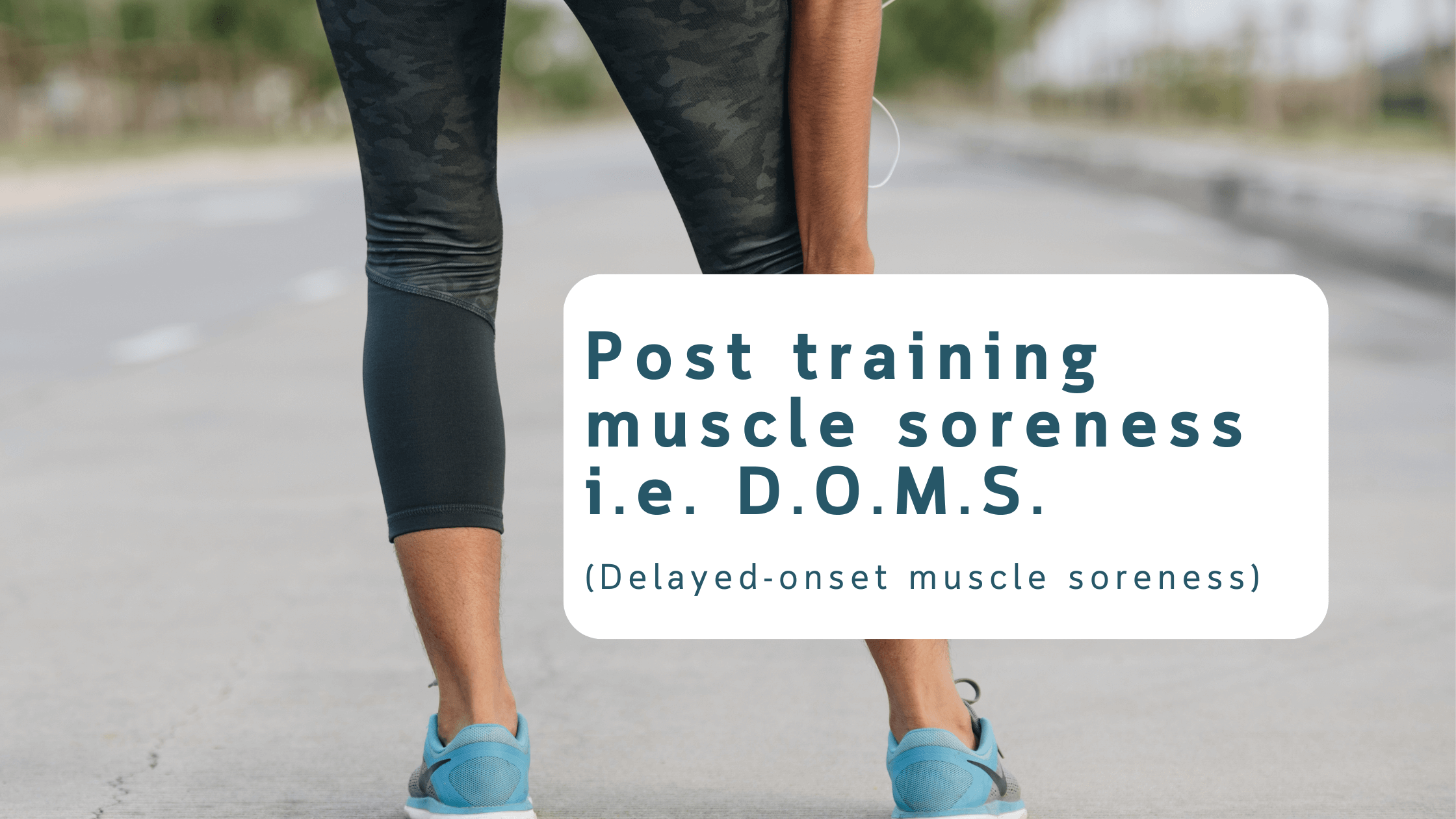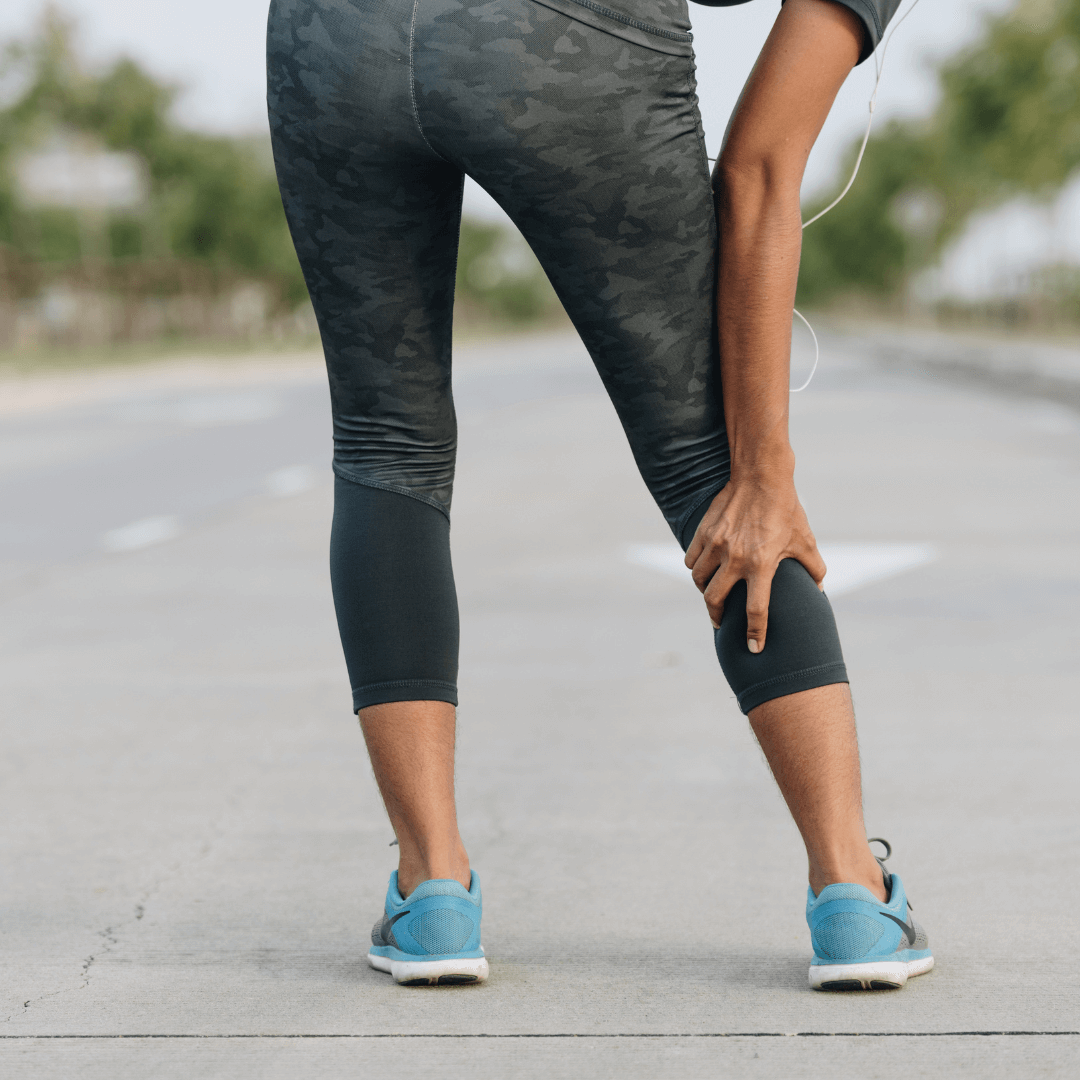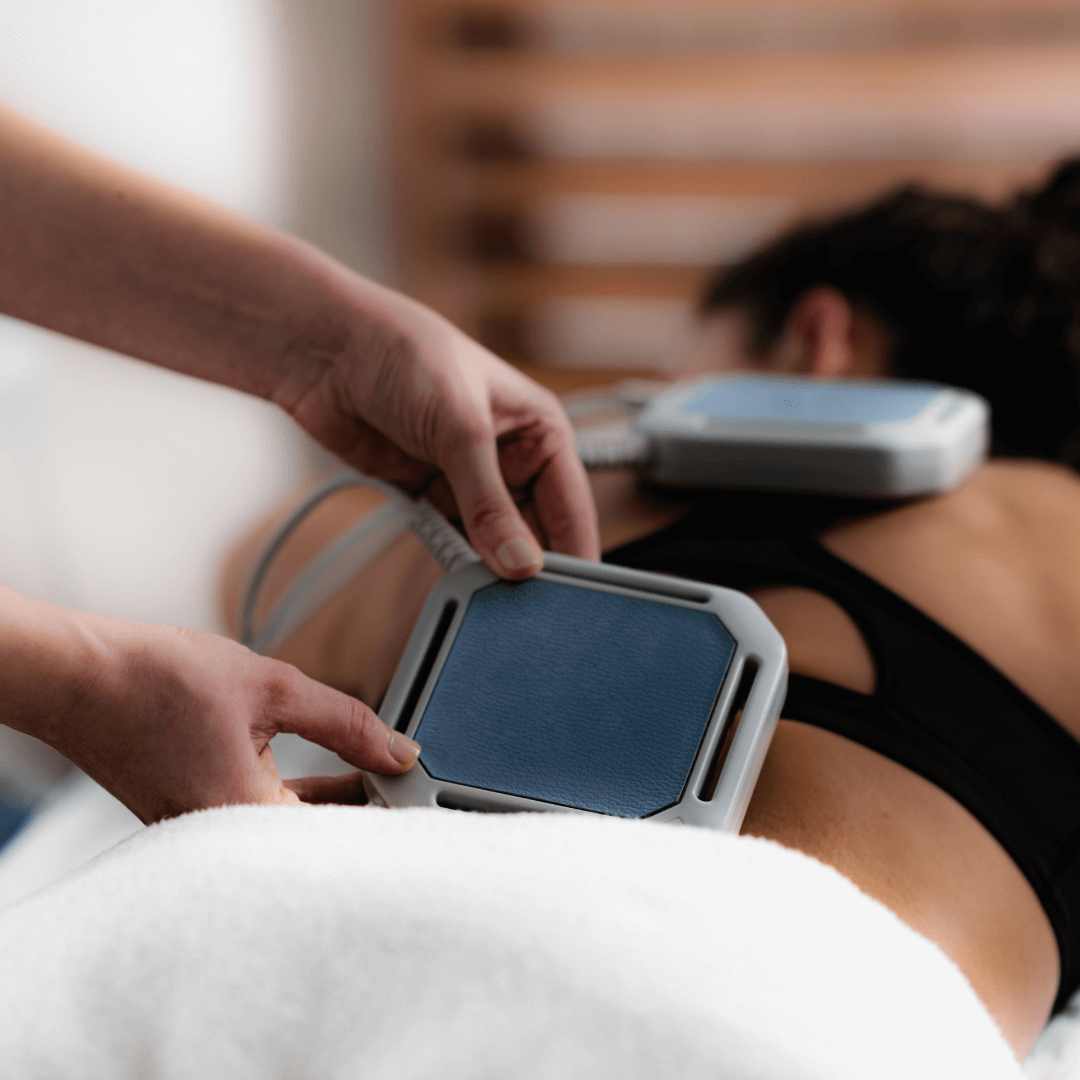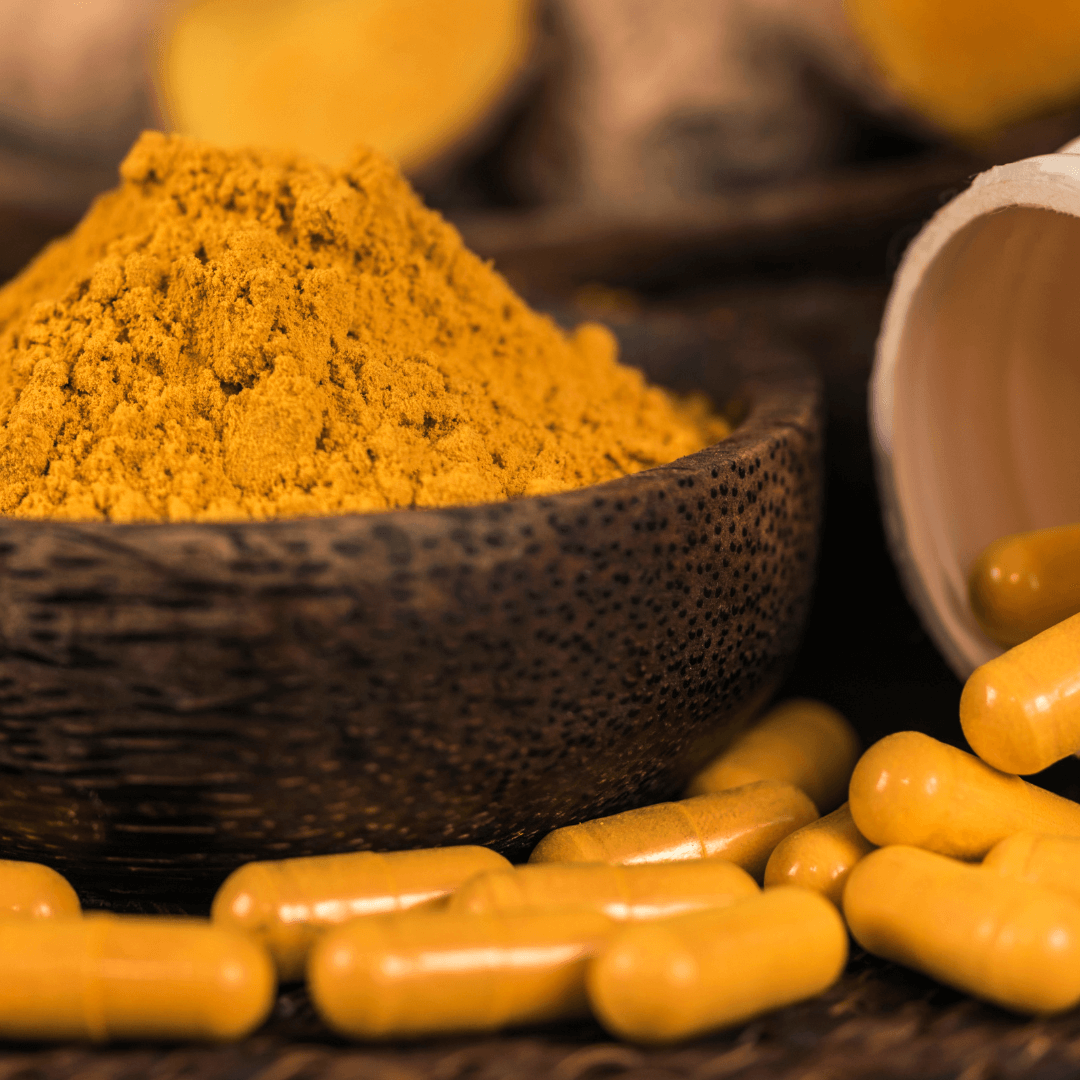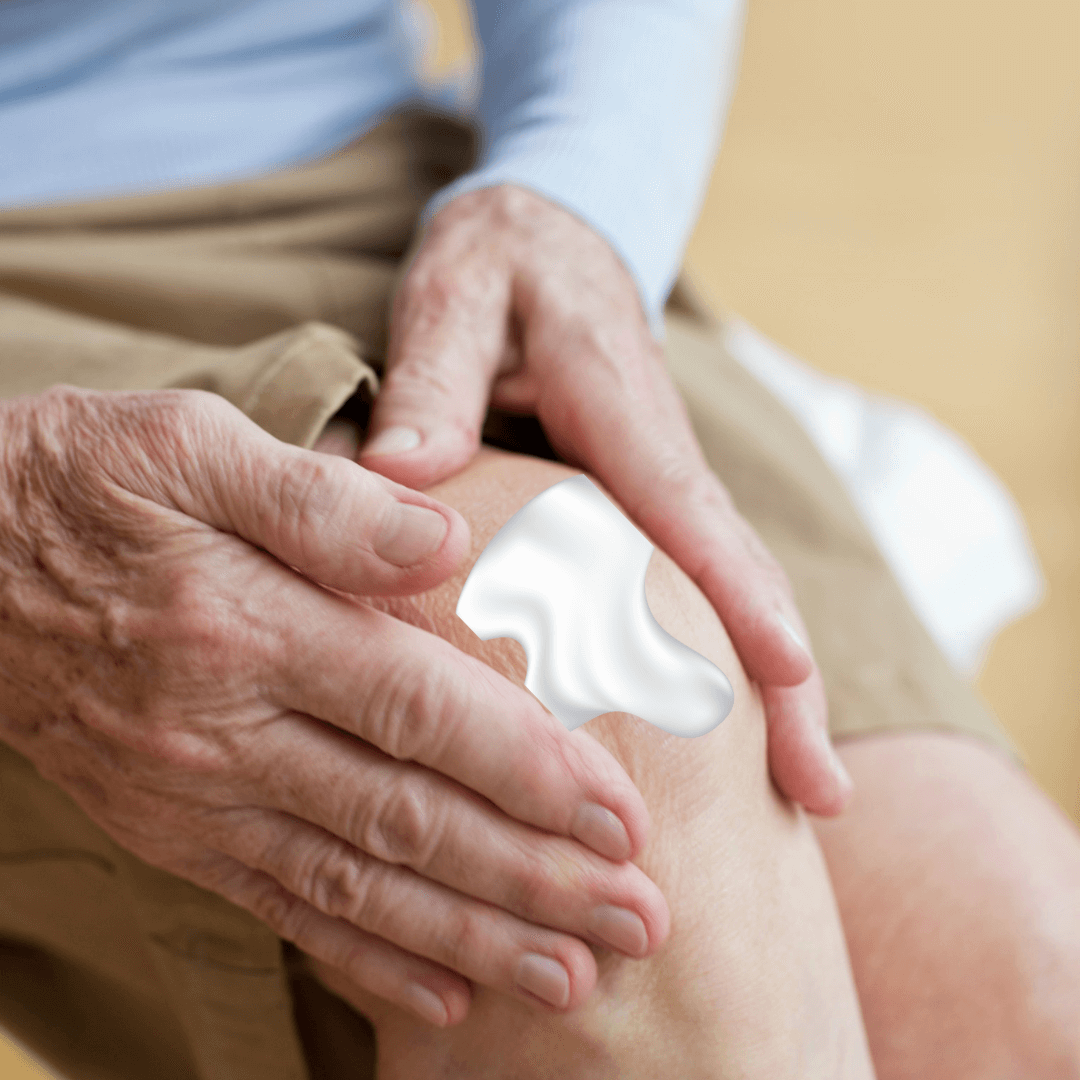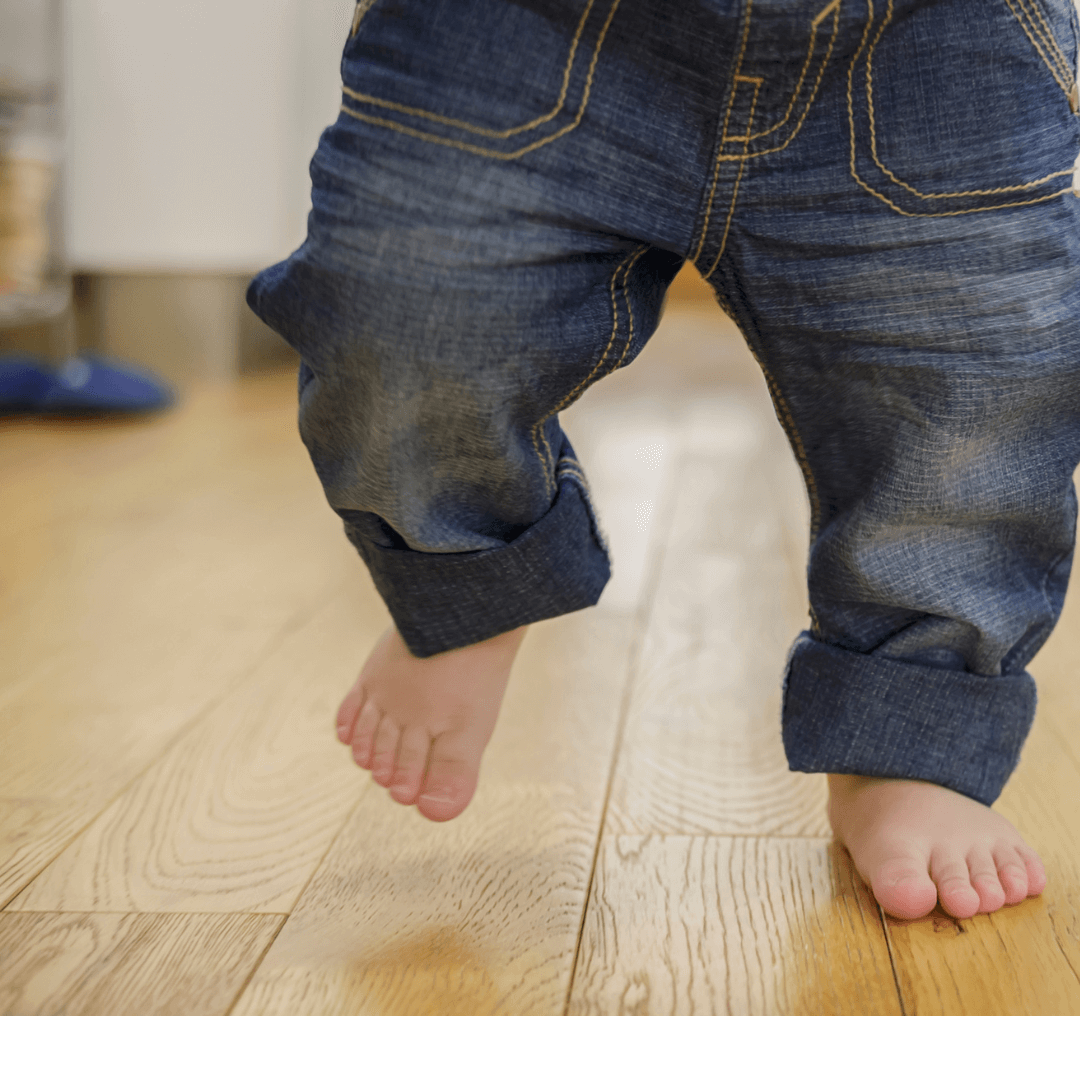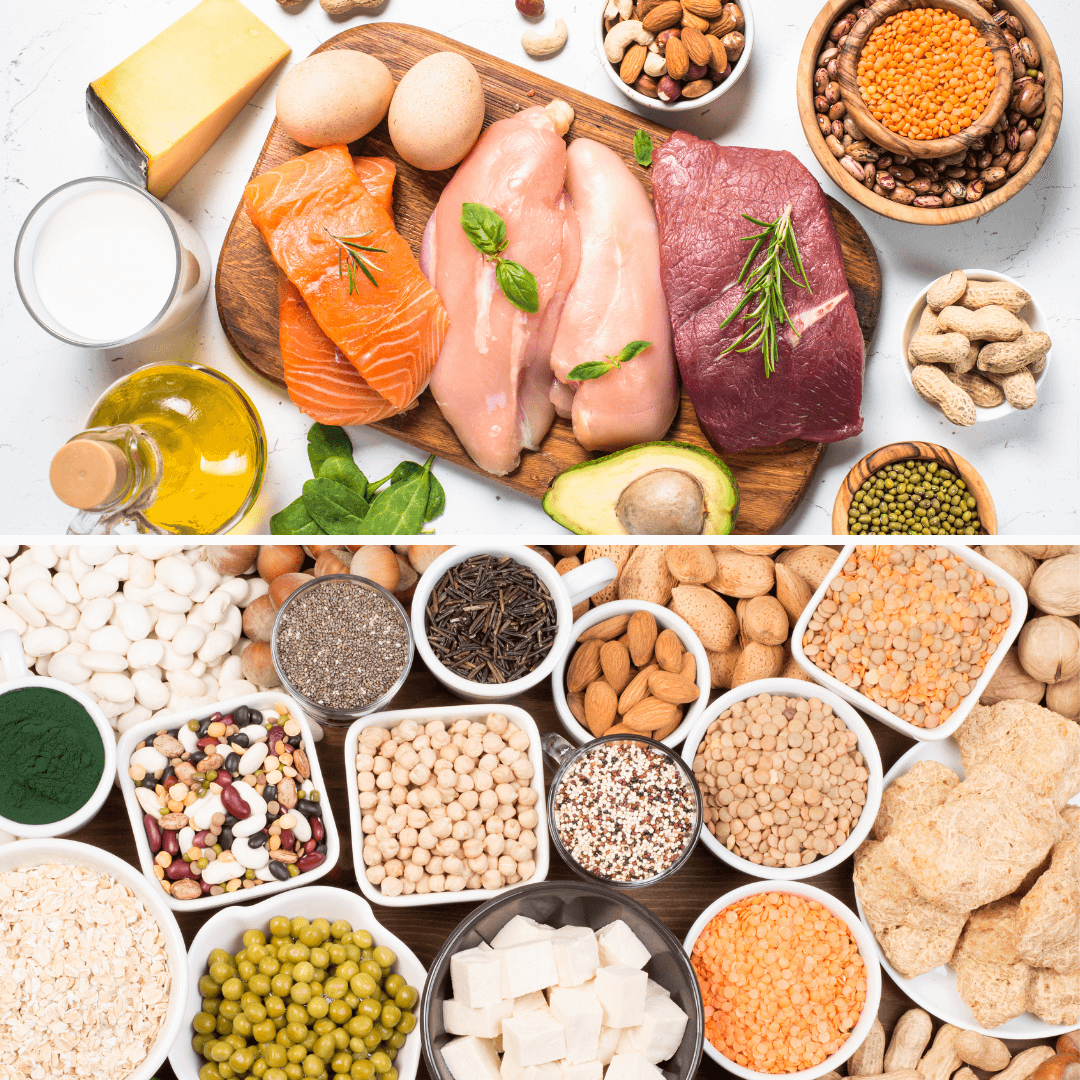Post training muscle soreness i.e. D.O.M.S.
D.O.M.S. (delayed-onset muscle soreness)
‘D.O.M.S i.e. Delayed-onset muscle soreness, is a type of muscle pain that peaks 1–2 days after strenuous physical activity. Typically, it resolves within 4 days. Anyone can experience D.O.M.S., regardless of their fitness level.
Any physical activity that stresses the muscles can cause DOMS, including weightlifting or high intensity training.
However, DOMS may also follow any activity a person is unaccustomed to. Carrying heavy boxes or groceries up the stairs could cause DOMS in the legs or back. Home decorating could cause DOMS in the arms, neck, and shoulders. - Medical News Today
What causes DOMS?
The most likely explanation is that DOMS results from microtrauma to the muscles.
When people use their muscles in an unusual way, they can cause microscopic tears in the muscle fibers. This, in turn, leads to inflammation. The inflammatory response releases prostaglandin E2 and leukotriene hormones, which can cause pain and contribute to swelling.
DOMS may be more likely after exercises involving eccentric contractions. During these exercises, a muscle stretches and contracts simultaneously. - Medical News Today
‘Symptoms of D.O.M.S include: -
DOMS symptoms usually peak 24–48 hours after strenuous activity and resolve within 4 days.
Muscle pain and tenderness can make everyday activities difficult, such as walking, running, or even sitting comfortably.
Factors that may affect DOMS include:
muscle stiffness
pain when moving the muscle
tenderness
swelling
A person may also have reduced strength and range of motion in the affected muscles.
5 Helpful ways to reduce post training muscles soreness
01 - Massage
An analysis from Frontiers in Physiology indicates that a massage after strenuous exercise can relieve muscle soreness and improve muscle performance.
Self-myofascial release is a technique that relieves tension and promotes blood flow. It involves applying pressure to the muscles using tools such as a foam roller or roller massager.
A 2017 review in the International Journal of Sports Physical Therapy concludes that self-myofascial release could reduce pain and muscle tightness after an intense exercise session. Medical News Today
02 - Cold water immersion
Full-body immersion in a cold water bath may improve muscle recovery after exercise slightly better than not using a recovery technique.
Research finds that immersion in 11–15°C ( 51.8–59°F) water for 11–15 minutes can provides the best results for both immediate and delayed effects. - Medical News Today
While not everyone is mad about an ice bath, I wonder if using an ice pack wrapped in a tea towel and placing it on affected area would work the same? Any thoughts?
03 - Heat therapy
Applying heat to stressed muscles may reduce DOMS by increasing tissue flexibility and blood flow.
A small, 60-person study observes how 8-hour heat therapy may impact DOMS after exercise.
In the study, applying heat wraps immediately after exercise reduced muscle soreness and stiffness.
Applying heat 24 hours after exercise for the same duration was not as beneficial. - Medical News Today
I wonder if a heated wheat pack would have the same results? If you do not have one, try rice in a sock and gently heat it up in a microwave. Too much could burn the rice.
04 - Supplements
Some evidence suggests that taking certain supplements can help relieve DOMS.
In one study, 21 college students received a D-ribose supplement or placebo before or after strenuous exercise.
The students who took D-ribose had less soreness and faster recovery times than those in the placebo group.
The effect was similar whether they took the supplement before or after exercise.
A 2020 review examined the effects of curcumin supplementation on DOMS.
Curcumin is the compound in turmeric that gives it its yellow color. While studies show mixed results, the researchers conclude that supplementing 150–1500 milligrams (mg) of cucurmin per day might help reduce DOMS. They suggest that curcumin helps reduce the inflammatory response that causes pain and stiffness. - Medical News Today.
I’ve found adding magnesium supplements beneficial too.
05 - Topical analgesics or pain relievers
Pain relieving gels, creams, and patches may help ease the symptoms of DOMS.
In some self-reported studies, topical pain relievers help reduce pain by at least 50% in some people.
The topical medications were nonsteroidal anti-inflammatory drugs (NSAIDs), including diclofenac (Voltaren) and ketoprofen gels. - Medical News Today
3 Ways to prevent D.O.M.S.
DOMS is a common physical response to intense or unfamiliar exercise. However, some practices may help prevent it, reduce its severity, or shorten its duration. They include:
01 - Warming up
Warming up before exercise prepares a person mentally and physically for their activity.
Dynamic (moving) and static (staying still) stretching may improve range of motion by activating the connections between the nerves and muscles.
However, there is no conclusive research to show that warming up reduces DOMS. - Medical News Today
A warm-up also activates and primes the connections between your nerve and muscles, which improves the efficiency of movement. Additionally, your range of motion (flexibility) should be increased by dynamic stretching.
How do I warm up before exercise?
A warm-up for light physical activity will take around 10 minutes.
It involves light aerobic activity and some dynamic stretching movements appropriate for the activity you’re about to perform.
This could include:
fast-paced walking
walking up and down stairs
fast-paced side stepping
jogging on the spot
arm swings
lunges
squats
I would also add calf raises and ankle circles too.
There’s little evidence that static stretching reduces your risk of injury during physical activity or exercise, or even soreness the next day. However dynamic stretching, incorporated into an aerobic warm-up, remains very popular.
02 - Cooling down
People often choose to perform dynamic or static stretches to cool down after exercise.
However, there is no reliable evidence that this helps reduce DOMS.
A 2018 review in Sports Medicine notes that active cooldowns may speed up cardiovascular and respiratory recovery.
For this reason, active cooldowns may promote a sense of calm that people may find beneficial. However, the review notes that active cooldowns do nothing to prevent muscle soreness or recovery.
How do I cool down after exercise?
To cool down after exercise, simply reduce the intensity of the activity you’ve been doing. For example, turn a:
jog into a walk
run into a jog
fast swim into an easy swim
This’ll help you gradually reduce your heart rate and begin the process of recovery.
Gently stretching each of the main muscle groups for 10 to 15 seconds will restore their length and can help bring your mind and body back to a resting state.
03 - Go slow
Baby steps.
Easing into new forms of exercise can help prevent DOMS. Gradually increasing the intensity or duration of a workout can help reduce a person’s muscle strain and post-exercise soreness. - Medical News Today.
Bonus tip: -
Eat more protein.
Studies consistently show that taking protein supplements after exercise helps build muscles and may aid in muscle recovery, but despite improvements in protein synthesis and signaling, there's limited evidence showing significant reductions in muscle damage or enhanced recovery, partly due to study limitations and variability in measuring muscle damage.
.
Adult women: 0.75g/kilogram of body weight/day. Adult men: 0.84g/kilogram of body weight/day. People over 70 years old: 1g/kilogram of body weight/day.
Adult men: 0.84g/kilogram of body weight/day.
Signs of protein deficiency
Signs of protein deficiency include:
- wasting of muscles, which can lead to reduced physical function and an increased risk of falls
- oedema (build-up of fluid)
- anaemia
To maintain muscle mass and strength it is also important to complement protein intake with exercise to avoid muscle wasting and maintain strength (for example, walking and resistance/strength exercises). This is particularly important for adults over the age of 50 as muscle mass begins to decrease with age. - Dietitians Australia
Protein and exercise
Protein is an important nutrient for exercise. For most people the quality and timing of protein is more important than eating excessive amounts of protein.
Exercise uses up energy and the body’s muscles. You should eat a meal with a high-quality serve of protein and a carbohydrate soon after exercise to replace energy stores and help repair and maintain muscle mass. This could be something like a bowl of cereal with milk, yoghurt and muesli, or cheese and crackers.
For more info about protein, go to Dietitians Australia or contact your local dietitian or nutritionist about your personal protein needs.
Summary
DOMS is a common condition that can happen to anyone, regardless of fitness level. Experts are unsure of the exact cause. However, it likely results from unfamiliar or strenuous exercise causing microtears in the muscle fibers.
The muscle soreness and stiffness characteristic of DOMS usually peaks within 1–2 days and resolves after 4 days. However, this can vary.
People can try topical pain relievers, heat packs, and massages to soothe sore muscles. - Medical News today.
Source: -
D.O.M.S: -
https://www.medicalnewstoday.com/articles/delayed-onset-muscle-soreness#symptoms
https://www.ncbi.nlm.nih.gov/pmc/articles/PMC4637917/
https://www.frontiersin.org/journals/physiology/articles/10.3389/fphys.2017.00747/full
https://jps.biomedcentral.com/articles/10.1007/s12576-015-0397-0
https://www.ncbi.nlm.nih.gov/pmc/articles/PMC4802003/
https://pubmed.ncbi.nlm.nih.gov/27454218/
https://www.ncbi.nlm.nih.gov/pmc/articles/PMC7418385/
https://www.ncbi.nlm.nih.gov/pmc/articles/PMC6481750/
https://www.sciencedirect.com/topics/neuroscience/delayed-onset-muscle-soreness
https://www.ncbi.nlm.nih.gov/pmc/articles/PMC5999142/
Protein: -
https://dietitiansaustralia.org.au/health-advice/protein#:~:text=Exact%20protein%20requirements%20depend%20on%20age%2C%20gender%2C%20height%20and%20weight.&text=Adult%20women%3A%200.75g%2Fkilogram,kilogram%20of%20body%20weight%2Fday.
https://pubmed.ncbi.nlm.nih.gov/24435468/


